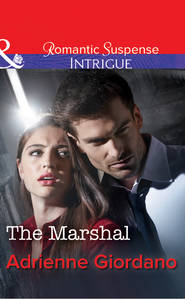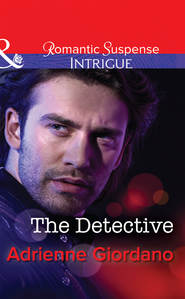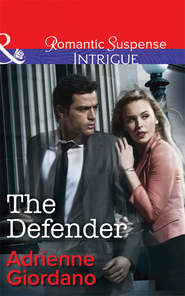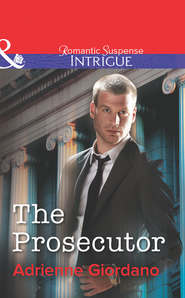По всем вопросам обращайтесь на: info@litportal.ru
(©) 2003-2024.
✖
The Rebel
Автор
Год написания книги
2018
Настройки чтения
Размер шрифта
Высота строк
Поля
“Oh, harsh.” He splayed his hand and his beautifully long fingers over his chest, but his face gave him away, all those sharp angles softly curving when he smiled. “You wound me.”
Such a weasel. From her worktable, she grabbed her flat wooden tool. “Okay, hotshot. Let’s see what you’ve got.”
“If I tell you and it works, you go with me to see that detective. That’s the deal.”
“Yes. If it works, I’ll go with you.”
Silly, silly girl. All this to prove him wrong. Something told her, if he nailed this, she might never hear the end of it.
He smiled at her, spun to the sculpture and, without touching it, pointed to the right corner of the mouth. “It’s not the lips so much but the small depression that should be right there.”
What now? Lunging for the photo, she analyzed the corner of the CEO’s mouth. Dammit. Right there. Well, not right there. The dimple was so slight it couldn’t even be called a dimple. Her issue hadn’t been the lips at all, but the mouth in general. And, oh, she could rail about how David had tricked her, about how she specifically meant the lips and the deal would be negated.
But she should have caught that. Even the tiniest of details, as they’d both just learned, could ruin a project.
“David Hennings, I don’t know whether to kill you or kiss you.”
His hand shot up. “Can I vote?”
She cracked up. “No. But darn it, I can’t believe I didn’t catch that.”
“You were looking too hard. Happens to me sometimes when I’m working cases. I’ll be searching for precedents and—bam—someone else reads my notes and in five minutes knows exactly what I need. It’s irritating as hell.”
“It sure is.”
“That being said...”
He strode back to where they’d been sitting, his smile growing wider by the second. So smug.
And she’d just handed him that victory.
He slid his phone from the side pocket of his jacket and held it up for her to see. “What time shall I tell the detective we’ll be there?”
* * *
DETECTIVE LARRY MCCALL ushered Amanda and David into a small conference room at Area North headquarters. The old building didn’t have the charm her building had, but with a few fixes and a splash of fresh paint the dreary and dull white walls wouldn’t feel so confining. Then again, Amanda supposed a police station wasn’t meant to be paradise.
Inside the room, a veneer table large enough for six had been jammed into the corner. Probably the only way it would fit. Five chairs—what happened to the sixth?—were haphazardly pushed in, a couple almost sideways. Maybe the last meeting had ended in a rush.
Amanda took the chair Detective McCall held for her while David remained standing, casually leaning against the wall directly across from her. “Thank you,” she said.
“No,” the detective said. “Thank you for coming in.”
“Detective, please, let’s not get ahead of ourselves. As I said—”
McCall waved her off. “Yeah, I know. You’re not a forensic artist and you’re only having a look. I get it. Still, I appreciate whatever you can do.”
He slapped a file onto the table, the fwap reverberating in her head, making her ears ring. What am I doing? She shouldn’t be here. She’d spent years running from the lure of this kind of work. Years. And for good reason. As talented as her mother had been, her work with law enforcement had been the end of the fairy tale. For Amanda. For her father. And most of all, for her mother.
David shifted, drawing her attention, and she brought her gaze to his. He cocked his head—he did that a lot—and stared at her face while she worked on arranging her features into neutral. No clues here. Still, he narrowed his eyes and she knew he’d sensed something. Those haunting dark blue eyes of his burned right through her.
The file McCall had slapped on the table was open in front of her and she pulled her gaze from David, needing to be free of whatever psychoanalysis he performed on her. In front of her was a two-dimensional facial reconstruction—a detailed sketch—of a woman with shoulder-length dark hair flipped up at the ends. Big eyes. So young. The woman appeared to be late teens, perhaps early twenties. If so, the hair was wrong. No teenager would wear her hair in that style.
Not my call.
Keeping her hands in her lap, Amanda leaned forward. The drawing had been done on bristol paper, its surface rough and able to tolerate abundant erasures.
She glanced at McCall. “Was this done from the skull itself?”
“Uh, no.” He reached over, shuffled through some pages in the file and pulled out photos of the skull. “These. Why?”
“Photos can distort the skull. If the lighting is wrong, the artist can misinterpret something.”
Which could have been her problem with the photo of the firefighter.
“No foolin’?”
Amanda sat back, still refusing to touch the pages. If she did, they’d somehow bond her. “It can happen. The hair is long. Was there hair found near the skull?”
“Yeah. A few strands. We have it in evidence.”
Okay. Well, she knew that was right at least. But truly, if they wanted an accurate image, the artist should have been given access to the skull.
“Did you have any hits at all on the drawing?”
“Not a one.”
David finally moved from his spot against the wall and looked over her shoulder at the photo. His presence behind her, looming and steady, sent her body mixed messages. Messages that made her think he could handle anything. That the sheer size of him wouldn’t relent. Ever.
Her gaze still on the composite, Amanda cleared her throat. “No missing-person reports?”
“Nothing that fits the timeline. Or her age.”
“I’m assuming an anthropologist has studied the bones and given an age estimation?”
“Yeah. His notes are in there. He thinks she was early twenties. White.”
Amanda dug through the stack of papers, located the anthropologist’s notes and began her review, alternately checking the photos of the skull until she’d read the entire report.
David moved back to his spot against the wall, this time crossing his legs at the ankles and sliding his hands into the front pockets of his jeans. “What do you think?”
“About?”
He shrugged. “Anything. The photo, the file.”
“The drawing is good. At least from what I can tell. One thing that’s bothering me is that the artist didn’t have a chance to study the skull. If I’d been assigned this, I would have requested to see the actual skull.”
“What would that have done?”









